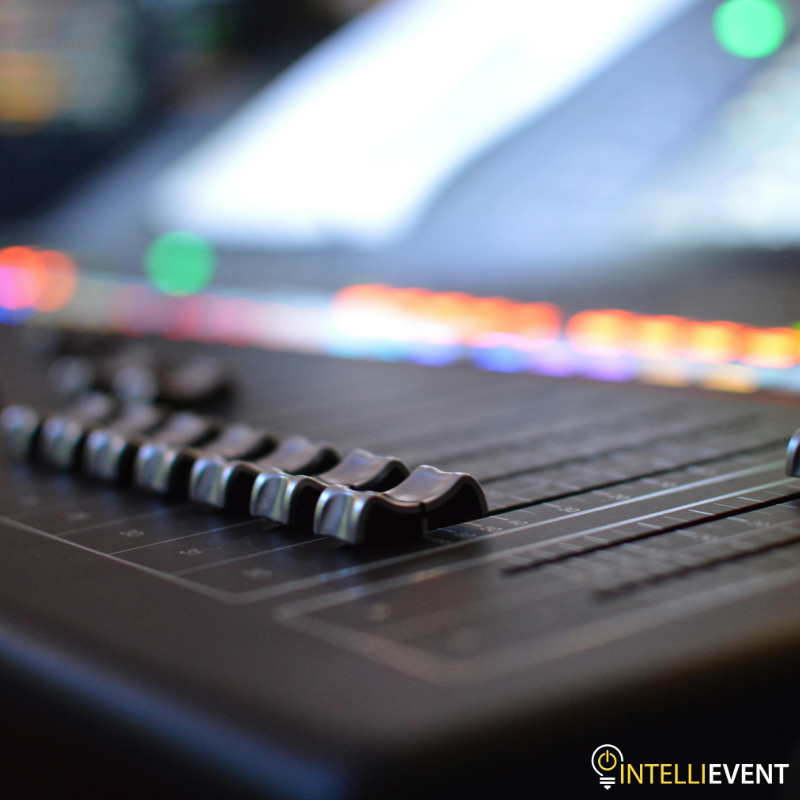Why audio visual charlotte nc is ideal for outdoor events
Wiki Article
Recognizing the Incorporation of Audio Visual Innovation in Today's Educational Environments
The integration of audio-visual modern technology in instructional setups has actually changed the mentor and discovering process. Educators now have access to devices that satisfy different finding out designs, boosting trainee engagement and cooperation. Nevertheless, the incorporation of these modern technologies offers both chances and obstacles. Understanding just how to effectively carry out these tools is essential. What strategies can educators employ to maximize the benefits of audio-visual modern technology in their classrooms?The Development of Audio-Visual Innovation in Education And Learning
As instructional requirements progressed over the years, audio-visual modern technology went through substantial transformations that reshaped the learning setting. Initially, devices such as film projectors and slide shows were the primary ways of integrating aesthetic components into class. These early modern technologies offered instructors with the ability to existing info dynamically, yet they were restricted in ease of access and interactivity.With the development of video clip cassette recorders in the 1970s, class started to integrate taped lessons, expanding the range of academic sources. The introduction of computers in the 1980s more revolutionized this landscape, enabling the creation of multimedia presentations and interactive knowing experiences.
The increase of the internet in the 1990s noted a turning point, enabling real-time accessibility to a wealth of audio-visual materials. Today, digital devices such as interactive white boards and on the internet discovering systems proceed to improve the instructional experience, fostering engagement and cooperation among students.
Advantages of Audio-Visual Devices for Diverse Discovering Styles
Audio-visual tools play a necessary role in satisfying diverse learning styles by boosting visual discovering and boosting acoustic involvement. By including images, videos, and audio, these technologies produce an even more comprehensive instructional environment. This multifaceted strategy enables teachers to attend to the diverse choices and demands of students effectively.Enhancing Visual Discovering
Engagement in the knowing procedure is substantially improved via making use of audio-visual devices, providing to various finding out designs. These devices, such as video clips, infographics, and interactive presentations, give aesthetic stimulations that help understanding and retention. Visual students, in specific, gain from the incorporation of pictures and animations, which can simplify complex concepts and enhance understanding. Furthermore, audio-visual resources can highlight real-world applications, making finding out more appropriate and interesting. By integrating color, movement, and audio, educators can develop a dynamic discovering environment that catches pupils' interest and cultivates deeper cognitive connections. Eventually, the critical use of audio-visual innovation not just sustains aesthetic learning but likewise improves the overall academic experience for varied students.Improving Auditory Involvement
A significant advantage of including audio-visual devices in education is their capability to enhance auditory involvement among students. These devices, which incorporate multimedia presentations, podcasts, and interactive audio aspects, satisfy numerous discovering designs, especially benefiting acoustic students (audio visual charlotte nc). By integrating noise and narration, teachers can produce immersive experiences that record pupils' interest and enhance comprehension. This involvement is necessary, as it fosters a deeper understanding of the material and advertises retention. Furthermore, audio-visual devices can facilitate collective knowing settings, urging pupils to participate in conversations and share their insights. Ultimately, the incorporation of audio-visual innovation not only supports auditory interaction however also enriches the total educational experience, making discovering more vibrant and reliable for all traineesEnhancing Engagement Through Interactive Learning

Gamification components, such as quizzes and simulations, can improve motivation and retention, making discovering extra enjoyable and reliable. These approaches not just boost cognitive involvement but additionally deal with varied knowing designs, making sure that all students can get involved meaningfully. Consequently, interactive understanding settings foster a feeling of community and belonging, inevitably resulting in boosted scholastic end results. With the combination of audio visual modern technology, educators can transform conventional class into vibrant areas where students prosper and actively form their academic trips.
Connecting Theory and Method With Multimedia Resources
Multimedia resources work as a critical link in between theoretical concepts and functional application in educational setups. By improving engagement, helping with collective understanding experiences, and supporting diverse discovering styles, these devices develop an extra comprehensive and dynamic discovering environment - audio visual charlotte nc. This technique not just promotes deeper understanding however additionally prepares pupils for real-world obstacles
Enhancing Engagement Via Multimedia
Engagement in academic setups greatly increases when teachers include multimedia sources into their teaching approaches. The usage of videos, podcasts, and interactive discussions improves the learning experience, permitting trainees to get in touch with the product on several levels. Multimedia sources deal with numerous discovering styles, providing aesthetic, acoustic, and kinesthetic stimuli that can hold students' focus better visit here than traditional lecture approaches. In addition, these sources can simplify intricate ideas, making them more accessible and memorable. By integrating multimedia, educators can create a vibrant class atmosphere that fosters inquisitiveness and motivates learners. Ultimately, the strategic usage of audio-visual innovation offers to link the gap in between theoretical expertise and useful application, enriching the instructional experience for both trainers and students.Assisting In Collaborative Knowing Knowledge
Many studies indicate that collective understanding experiences substantially improve pupil results when incorporated with multimedia resources. Multimedia tools facilitate interaction among pupils, allowing them to take part in problem-solving and critical thinking jointly. By utilizing video conferencing, joint platforms, and interactive presentations, teachers create atmospheres for team effort and shared understanding. These technologies allow students to interact their ideas successfully and receive instant responses, promoting a much deeper understanding of the topic. Additionally, multimedia sources can present complex ideas in more digestible formats, advertising discussion and cooperation. Because of this, the combination click for more of collective knowing and audio-visual technology not only enhances the educational experience yet also prepares trainees for real-world synergy dynamics, highlighting the relevance of teamwork and cumulative expertise construction.Supporting Diverse Discovering Styles
While conventional mentor approaches typically accommodate a limited series of finding out preferences, the integration of audio-visual modern technology uses a much more inclusive strategy to education and learning. By employing multimedia sources such as video clips, interactive simulations, and digital presentations, educators can resolve different learning designs, consisting of visual, acoustic, and kinesthetic. This versatility enables differentiated guideline, allowing trainees to involve with material in ways that reverberate with their private choices. Furthermore, audio-visual tools can facilitate much deeper understanding by offering multiple representations of complex ideas. Consequently, trainees who might battle with traditional techniques can find alternate paths to success, promoting an extra equitable learning atmosphere that supports scholastic achievement for all learners.Challenges in Executing Audio-Visual Modern Technology
Although audio-visual innovation holds wonderful promise for improving instructional experiences, its execution commonly experiences considerable challenges. One key concern is the economic problem related to purchasing and keeping such tools, which can stress budgets, especially in underfunded organizations. Additionally, inadequate training for educators can impede reliable integration, leaving them ill-prepared to use the innovation totally. Technical problems, such as software breakdowns and compatibility problems, may likewise disrupt lessons and irritate both teachers and pupils. Additionally, differing levels of pupil access to technology outside the class can develop differences in finding out possibilities. The potential for over-reliance on innovation may detract from important training approaches, eventually restricting the instructional experience. Addressing these challenges calls for an extensive approach, including appropriate financing, specialist growth, and fair access to sources, to ensure that audio-visual modern technology can be leveraged properly in today's instructional settings.Best Practices for Integrating Technology in the Class

In addition, cultivating an interactive environment through collaborative devices urges pupil involvement and engagement. Making use of diverse audio-visual resources deals with various learning designs, accommodating aesthetic, acoustic, and kinesthetic learners. Consistently reviewing the influence of technology on pupil knowing aids educators refine their techniques and adjust to altering demands. Lastly, involving students in the choice of modern technology advertises possession and motivation. By sticking to these best techniques, educators can create a vibrant class environment that properly incorporates innovation and enhances the academic experience for all pupils.
The Future of Audio-Visual Modern Technology in Education
As class significantly welcome technology, the landscape of audio-visual tools in education proceeds to progress (audio visual charlotte nc). Future innovations are anticipated to concentrate on higher interactivity and personalization, allowing instructors to customize learning experiences to private pupil requirements. Innovations such as augmented reality (AR) and online truth (VR) will likely give immersive learning atmospheres, boosting student engagement and understanding
Artificial knowledge (AI) is positioned to play a considerable function in audio-visual innovation by using real-time feedback and flexible understanding paths. This assimilation may aid educators identify and resolve student obstacles more efficiently. Cloud-based platforms will assist in much easier access to resources and cooperation amongst trainees and instructors, no matter of location.
In addition to these technical breakthroughs, professional growth for educators will be crucial, ensuring they are geared up to utilize these tools successfully. Generally, the future of audio-visual modern technology in education and learning assures to develop more vibrant, comprehensive, and impactful understanding experiences.
Frequently Asked Concerns
How Can Educators Choose the Right Audio-Visual Equipment for Their Classrooms?
Choosing appropriate audio-visual devices calls for instructors to evaluate their academic goals, consider pupil needs, evaluate available technology, and look for suggestions from peers or experts, making sure devices effectively enhance understanding and engagement within their details classroom setting.What Budget Factors to consider Are There for Applying Audio-Visual Technology?
Spending plan factors to consider for carrying out audio-visual innovation consist of initial acquisition expenses, upkeep expenses, training for team, and possible software program licensing fees. Additionally, long-lasting investment in updates and replacements need to also be factored right into financial preparation.Exist Details Training Resources for Teachers on Audio-Visual Tools?
Numerous institutions offer training sources for instructors on audio-visual devices, including online training courses, workshops, and training guides. These sources aim to improve teachers' skills and self-confidence in properly integrating modern technology right into their mentor practices.Exactly how Do We Determine the Effectiveness of Audio-Visual Technology in Knowing?
Determining the effectiveness of audio-visual innovation in discovering involves reviewing student involvement, comprehension, retention rates, and total scholastic performance. Surveys, evaluations, and observational researches can offer beneficial understandings right into its influence on academic outcomes.What Prevail Misunderstandings About Audio-Visual Innovation in Education?
Common misconceptions about audio-visual technology in education and learning include the belief that it guarantees involvement and discovering outcomes, as well as the assumption that all students benefit similarly, ignoring specific discovering choices and demands.Report this wiki page